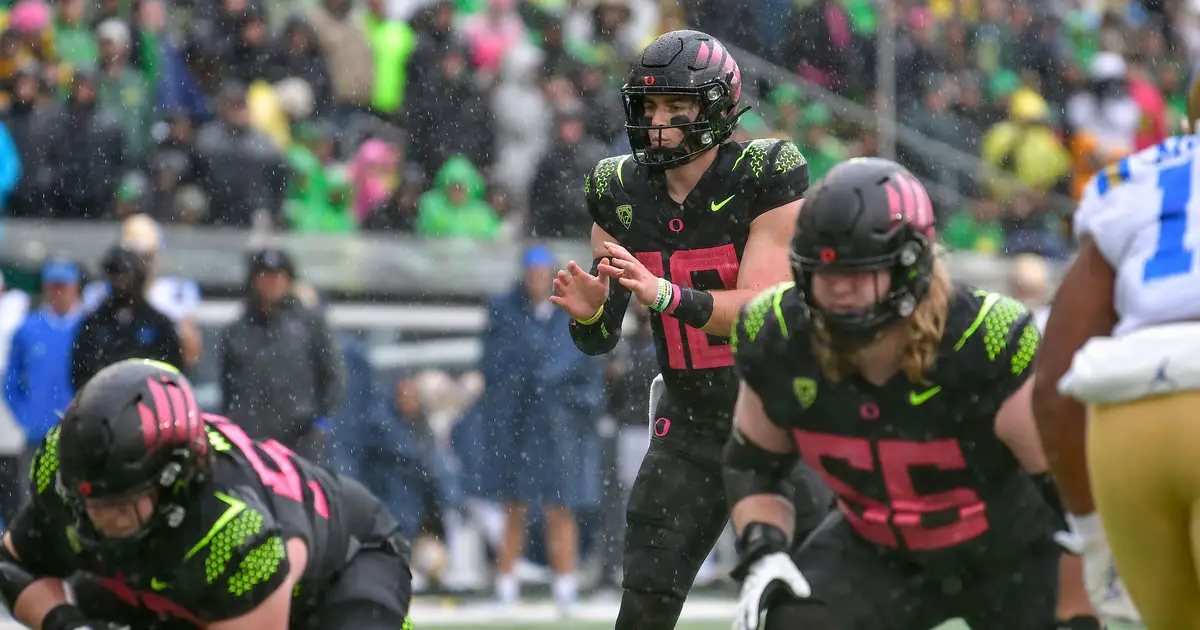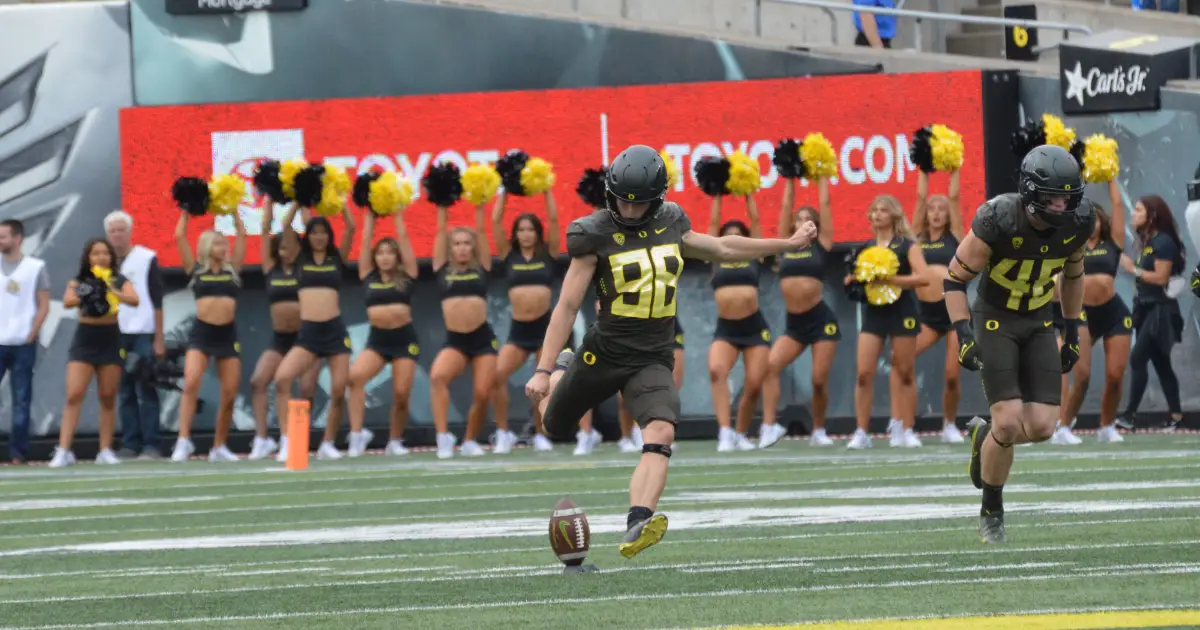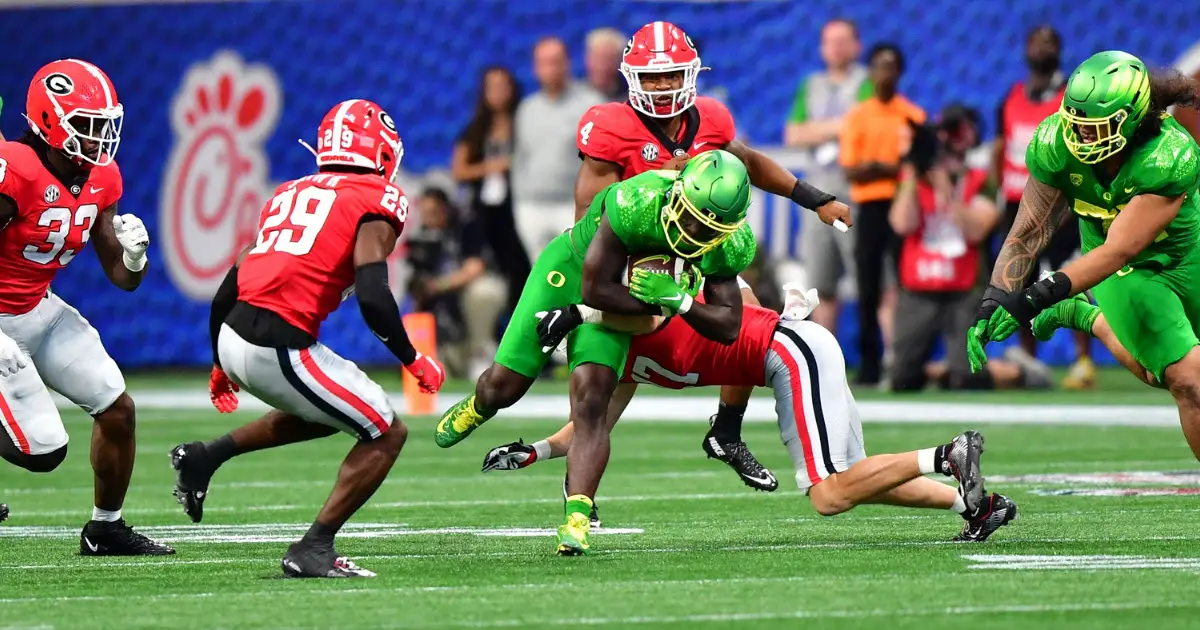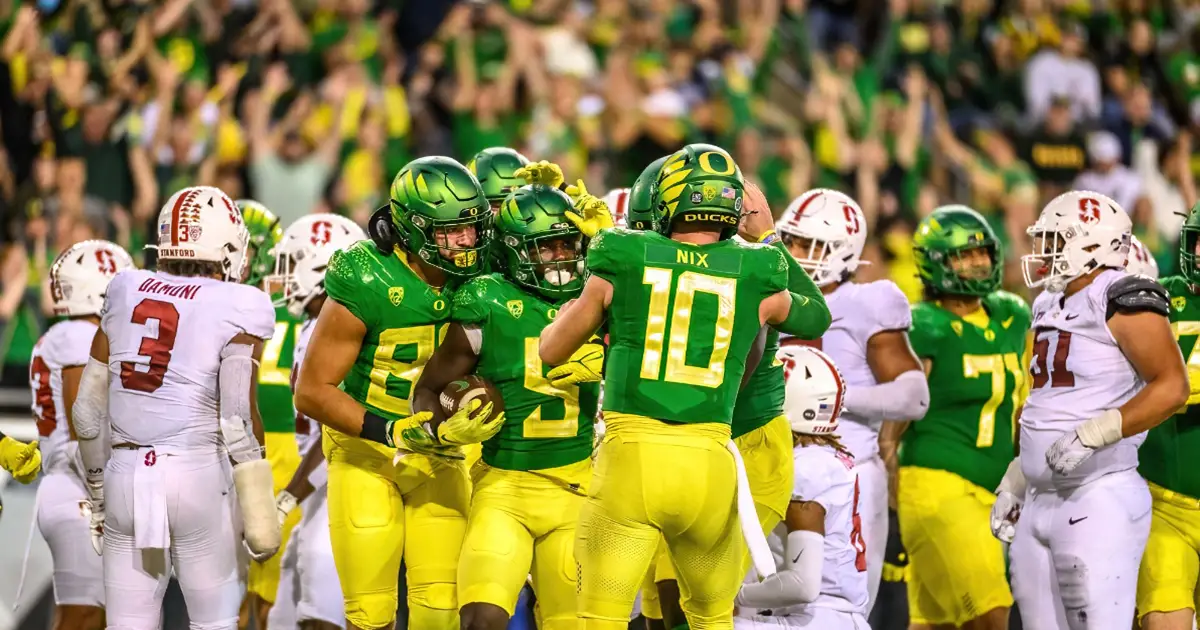Oregon’s offense under Bo Nix and Kenny Dillingham is the best in the school’s 130 years of football. No team before this one has done more with the ball in hand. Stats show that it isn’t even close.
With Nix at quarterback, the Ducks have scored on two-thirds of their drives. None of the teams under Mike Bellotti, Chip Kelly, Mark Helfrich, Willie Taggart or Mario Cristobal played that efficiently with their starting quarterbacks. No team before that era scored enough to be in the discussion.
Those facts come from many hours of poring over regular season drive charts and play-by-play records for the last quarter-century of Duck football. Conclusion: this offense is the most efficient in Oregon history, scoring on 67 percent of its possessions.
The two Natty teams? In 2010 the Oregon scored on 55 percent of its drives when starting QB Darron Thomas was taking snaps. The 2014 team scored on 63 percent with Heisman winner Marcus Mariota under center.
You can argue those quick-strike teams were a trifle more exciting. Lightning football under Kelly and Helfrich was breathtaking, with Autzen crowds counting the seconds between plays and shouting “hurry hurry.” But between those 60- and 90-second scoring drives were many stalled possessions.

Bo Nix and the Oregon offense scored on seven of its eight possessions against UCLA.
Those Natty teams did score a little more per game: 47 points in 2010 and 45 points in 2014, compared to 42 points this year. But Dillingham’s filagreed offense is designed to move more deliberately – as the numbers show. These Ducks average 10 possessions a game. The 2010 Natty team had 13.8 drives a game, and the 2014 team 11.5. (These numbers don’t include final drives to run out the clock.)
But no team before these Ducks has been more likely to score when it has the ball. And as for excitement, Nix is providing an unprecedented jolt in scramble mode. Every game, he fingersmiths several first downs on plays otherwise doomed. As magical as Joey Harrington, Mariota and Thomas were at improvising, none were as prolific as Nix.
One last bop to the cranium: Oregon’s stats include the abysmal numbers from Georgia. Remove those and the Ducks score on a sizzling 74 percent of their drives with Nix behind center — and they average 48 points, more than Oregon’s two Natty teams. Gimme Shelter and hide the kids. No team can keep up this pace for a season.
Can it?

Kickoffs are the most dangerous plays in football. Why does Oregon run them back?
The Folly of Running Back Kickoffs
Question: What do former Oregon stars Devon Allen, Walter Thurmond III and Thomas Tyner have in common? They all were lost for the rest of a season after being injured returning kickoffs, the most dangerous play in football. And for what? In final stats, teams almost always average worse starting field position than they would have fair catching to start at the 25.
Which leads to this game within the game that some of us bleacher bums play every week: guess how many yards the Ducks will lose today by not fair catching kickoffs.
Oregon is minus-30 yards for this season on kickoffs compared to starting every drive on the 25 by fair catching. (The Ducks were minus three yards Saturday against Cal, a team that fair caught every kickoff short of the goal line to start on the 25, injury free.) The lone exception to fair catching should be a close game with the Ducks needing field position and a score. Yes, run back that kick. But it is boneheaded to return kickoffs otherwise — and doubly so in a blowout win.
If it’s any consolation, nearly every college and professional team does the same as Oregon on kickoffs. But I can’t remember a time when a team I follow on either level ended the season with more yards by returning kickoffs.

Oregon lost to the No. 1 team, but that alone shouldn’t keep them from the playoffs.
Why Georgia Loss Can’t Stop the Ducks
Oregon is a long shot for the playoffs. But if the playoff selection committee is consistent with its own history, the Ducks won’t be disqualified solely by the Georgia beatdown.
Why? Ohio State, 2014.
That year, the Buckeyes made the playoffs and defeated Oregon for the national championship. They did so despite losing their second game of the season (not first), at home in Columbus (not on the road in Georgia), by two touchdowns (not seven), to a Virginia Tech team that finished the regular season 6-6 (not the defending national champions who are still undefeated).
Losing 49-3 to anyone is bad. But the committee would need to explain why a team with a new head coach that lost by seven touchdowns to the No. 1 team playing in its home state is worse than getting beat by two touchdowns — at home — in the second game of the season by a team that lost six games. Frankly, I’m not smart enough to see a difference.
And let’s consider schedules. The 2014 Buckeyes also played Navy, Kent State and Cincinnati. None of their four non-conference teams ranked in the top 25 at any point in the season. Ohio State then played an eight game conference schedule.
Oregon has played No. 1 Georgia and a BYU team then ranked No. 11. Oregon is playing nine conference games — not eight and another gimme.
So yeah, Oregon needs luck to make the playoffs. But fixating on the Georgia loss is as unfair as getting stuck in traffic with a handsy wildebeest.
Drex Heikes
Los Angeles, California
Top photo by Craig Strobeck
 Bob Rodes, the FishDuck.com Volunteer editor for this article, is an IT analyst, software developer and amateur classical pianist in Manchester, Tennessee.
Bob Rodes, the FishDuck.com Volunteer editor for this article, is an IT analyst, software developer and amateur classical pianist in Manchester, Tennessee.
Related Articles:
Oregon Enters Playoffs Better Off Than Last Year
Will The Coaching Carousel Kill Oregon's CFP Chances?
The Playoff Formula Hasn't Changed
Oregon Aims to Bury Dawgs, Punch Playoff Ticket in Rivalry Clash
Huskies Are the New Beavers, Stay In Your Lane Kiffin, and the Civil Apple Cup War
Oregon Football: The X-Factor Vs. Washington

Drex came to Oregon from the Alaska bush at a time that Dan Fouts, Ahmad Rashad and future New York Giant great George Martin (a freshman dorm mate) roamed Autzen. He was Emerald editor-in-chief before going on to a 44-year career at newspapers in New York, Alaska, Nevada and California. He spent half of his career at the Los Angeles Times, including stints in New York and Washington D.C. bureaus, where he was foreign affairs editor.
Drex worked in news, not sports, but did occasionally indulge his passion for football and once covered a tickertape parade for the New York Yankees. He directed investigative stories in 2008 that won the 2009 Pulitzer Prize gold medal for public service. He retired in Los Angeles but has a season seat at Autzen and flies up for most home games.

